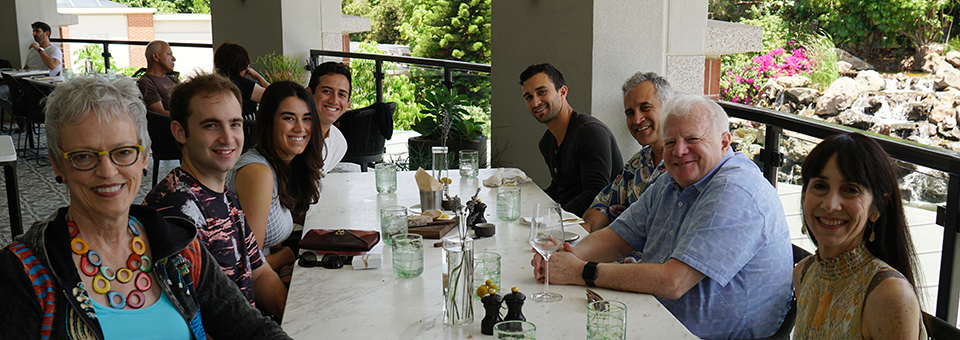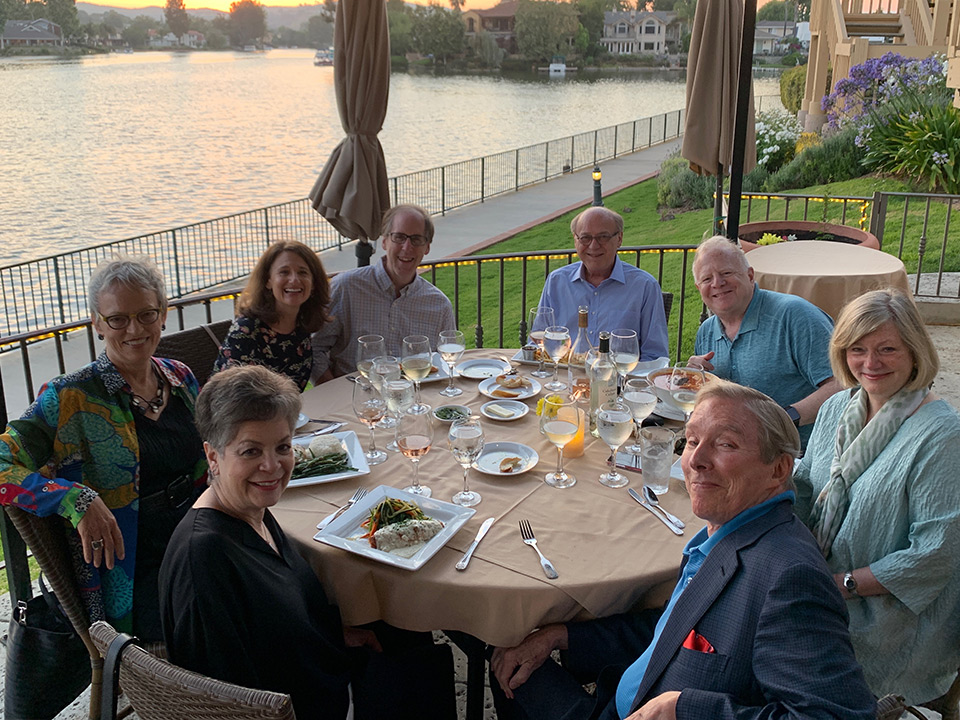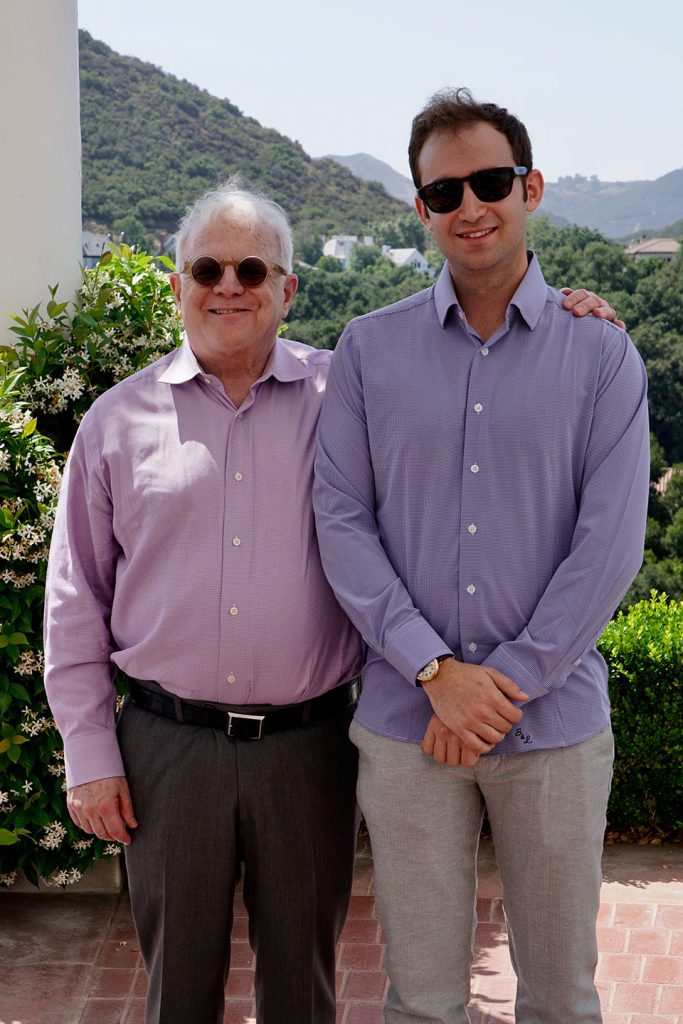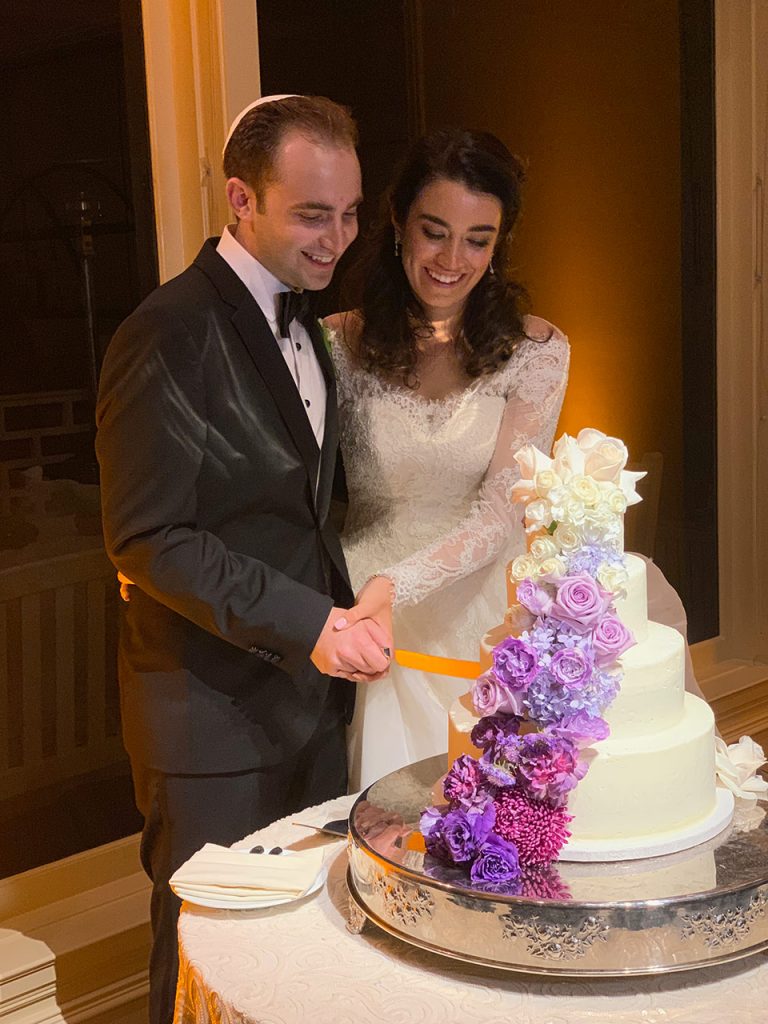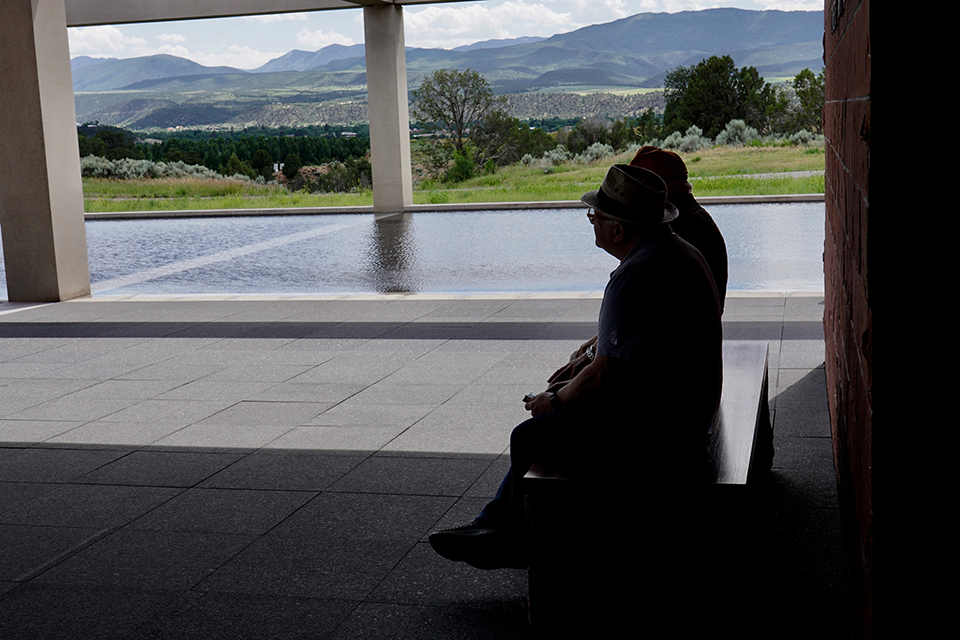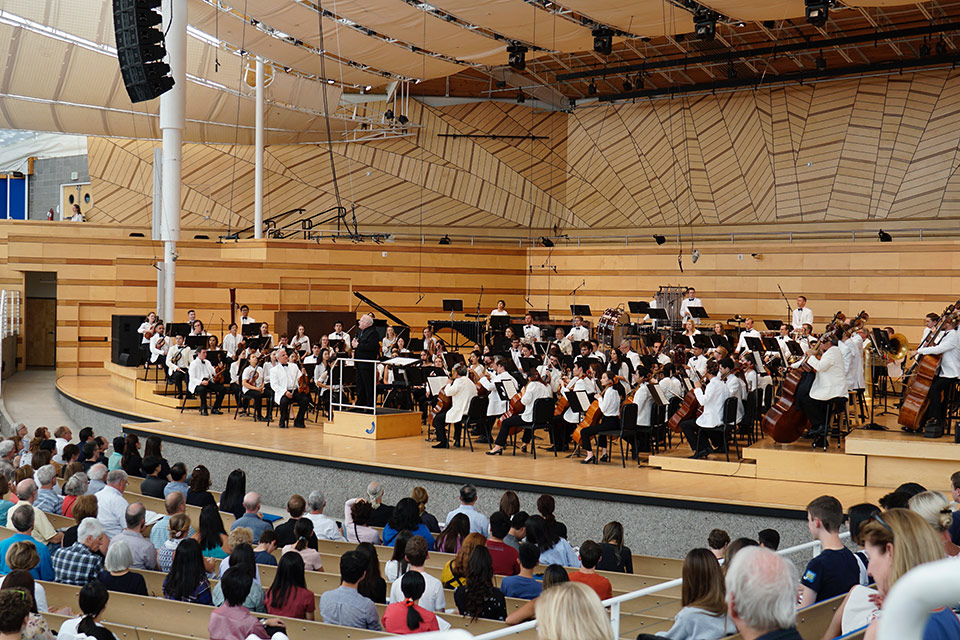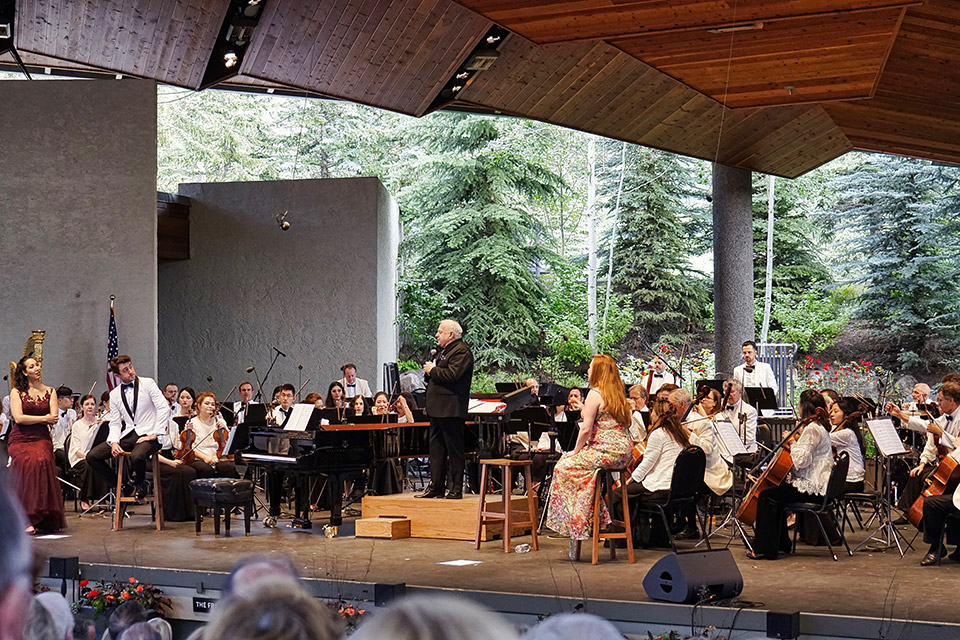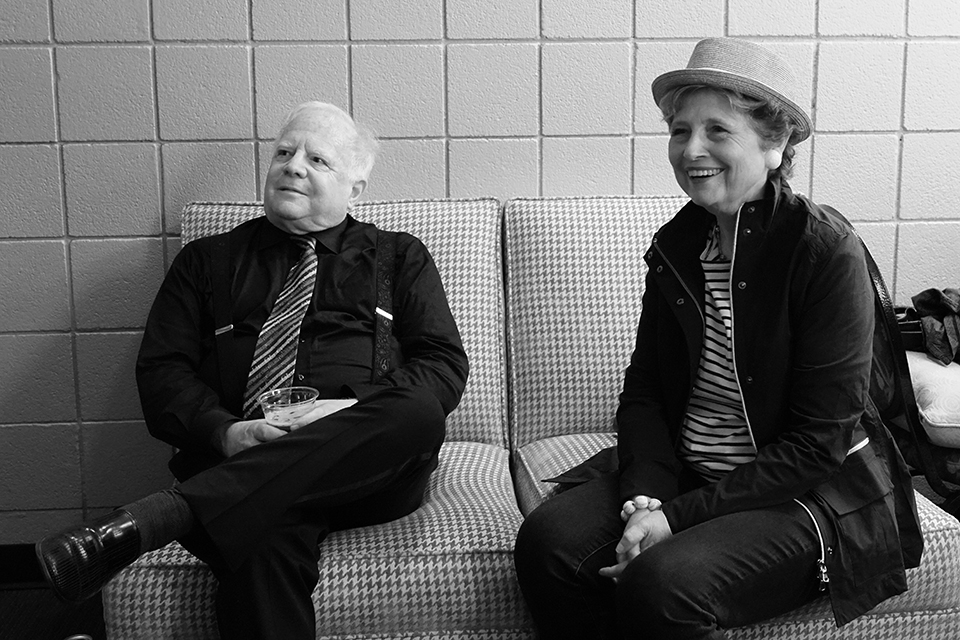“Happy is the man who finds a true friend, and far happier is he who finds that true friend in his wife.” —Franz Schubert
Aside from my own, I had never attended a wedding of any kind during my entire lifetime. After all these years, on July 7th, I found myself at the Sherwood Country Club in Thousand Oaks, California, watching, and crying a little, as my son married his fiancée and companion, Bridget Laifman. About one hundred people attended the ceremony, followed by a joyous celebration of the union during the reception and dinner.
Daniel and Bridget have been together for almost four years, and the Laifmans, who live in the valley area, have been exceptionally gracious in their acceptance of Daniel throughout the duration of their courtship. Mostly from afar, I have watched the two of them grow into a wonderful couple, balancing one another in their respective lives. Now that they are officially husband and wife, the bond between our two families is certainly going to become closer, even if the physical distance makes it difficult to see each other on a regular basis.
Being a novice regarding nuptial rituals, I had to take a crash course in what to expect. Bridget comes from a traditional Jewish family, and Daniel had no religious training whatsoever. His mother is not from the Jewish faith, but I am. However, that means that technically he is not bound by the same covenants as his wife. Nonetheless, they did wish to have a wedding with all the Old Testament trappings.
The first couple days were mostly about eating. Lunches and dinners with friends and families were plentiful and calorie-rich.
With Bridget having a large family, there were a lot of people to meet. While we were in the San Fernando valley, we experienced unexpected shock waves, as a couple of fairly strong earthquakes hit about 150 miles away. With swaying curtains, chandeliers and streets, it appeared that the earth was moving, but not in the way one expected during a wedding celebration.
The Slatkin contingent was not quite as large, but several of Daniel’s friends from his school days came out, as well as a few people Cindy and I have known for a while. It was great to spend some time catching up and discussing events of the day.
There was a rehearsal—thankfully one I did not have to conduct—and the signing of the ketubah. This is a sort of biblical prenuptial agreement outlining the responsibilities of the groom should there be a cessation of the marriage. The rabbi who officiated was quite enlightening for those of us who had no idea of what was going on. And it was at this point that Daniel started to worry about his ability to break the glass that signals the end of the wedding ceremony in one try.
On a glorious Sunday afternoon, with the weather gorgeous and the guests decked out in their finest, the wedding party stepped outside in orderly fashion. A string quartet was on hand to play as we all entered. With Cindy by my side, I escorted Daniel down the aisle. When we were all in place, the ensemble launched into a piece written by Daniel for the bride’s entrance. Bridget looked radiant, and since my son had not yet seen her in her wedding dress, his countenance burst with pride as he looked upon his soon-to-be wife.
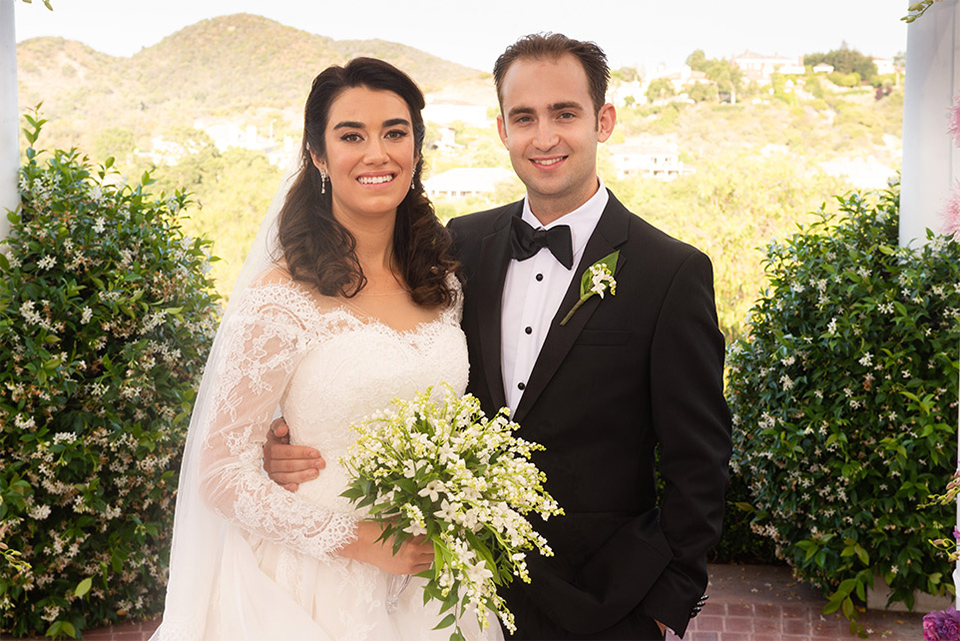
Photographer Ken Taylor
With all the trappings of tradition, including everyone saying various prayers in Hebrew, all went smoothly and beautifully. Bridget circled Daniel seven times, the members of the families said their portions in English, and Daniel hit the glass dead on. With mazel tovs aplenty, the couple walked back down the aisle as man and wife, and the party was on.
This is when I started having questions. What do the words to “Hava Nagila” really mean, and why is it played by organists at baseball games? What is the deal with putting the bride and groom up on chairs lifted by some of the family and guests? Are there any steps as to how to dance the Hora, and should I have brought my cardiologist to supervise how many times I was allowed to run around in circles?
Speeches and toasts filled the evening, and there was a very good band for listening and dancing. At some point, watching Daniel interacting with his old friends and new family, I knew it was time to let go. Some tearful hugs and goodbyes were followed by reflections and good thoughts for what was, is and will be for the Slatkins. This was not a sad occasion in any way, and if it is the only wedding I ever go to, it will be one to remember for the remainder of my life.
The next day, Cindy headed off to the Seattle area to visit with her father and sister. With the passing of her mother a few months earlier, this had to be a difficult time. Sorting through memorabilia, dealing with complicated legal matters, and just being in the house where her parents had lived together their entire lives must have brought back so many memories. There was not much I could have done to help, so my brother, his two kids and I went to Vegas for three days.
I gambled a little but really just wanted some time off from the emotions of the previous few days. We went to shows by Cirque du Soleil, Penn and Teller, and the comedian Alonzo Bodden. All were entertaining, and the legendary magicians remain a highlight of the Strip. Having dabbled a little when I was in my early twenties, I find that watching these masters of presentation and sleight of hand is always a treat.
There are not really that many different tricks, but rather, sets of variations on themes. The best parallel I can draw is that it is similar to listening to different performers play the same piece. The notes are all in place, but it is what the musicians do with those notes that makes the difference. Temperatures were in the 90s, but that was nothing compared to what was occurring in the majority of the United States, where heat indexes were breaking all kinds of records, and not in a good way. No climate change? I don’t think so.
Nostalgia was in the air as I drove from Denver to Aspen, Colorado. It was in 1964 that I began my journey into the conducting world, and although I had decided to do very little conducting in the summer months, this place seemed like a logical choice as I approached my 75th year.
Cindy joined me from Seattle, and mostly, we stayed to ourselves, with only a few visits with old friends and a little sightseeing.
***
My teaching was limited to two classes, one with pianists and conductors and the other with composers.
For the concert with the Aspen Festival Orchestra, a rather typical Slatkin program was on the menu. A piece I had commissioned two years ago, Conor Brown’s How to Relax with Origami, made a wonderful impression on both the orchestra and audience. It has not lost its freshness and is a delight in every respect. I will continue to follow his career with great interest.
The pianist Seong-Jin Cho was the soloist in the Second Rachmaninov Concerto. He and I had last worked together in Monaco, and it seems his career is blossoming. Tempi in the concerto were well considered, and he made a fine impression on everyone in his Aspen debut. One of the pleasures of doing works such as this with a combination of professionals and students in the orchestra is that one has to balance teaching the piece to the newbies and keeping it fresh for the seasoned musicians. In other words, I get to remind everyone of why this music is great.
Long a favorite of mine, the Enigma Variations closed the program. Bringing to life Elgar’s friends is always a delight, especially now that we seem to know who all of them are. And the subtext regarding the theme that runs through the work but is never heard continues to fascinate musicians. I still think it is the composer himself rather than any musical phrase, but perhaps this is something that we should never know, keeping the mystery alive. The orchestra was brilliant, and for a change, it did not rain during the performance—a tradition broken, at least for me.
A couple days prior to this concert, I received a call conveying some disheartening news. My colleague and friend Bramwell Tovey had been diagnosed with a rare soft-tissue cancer. He was supposed to perform with the NY Philharmonic in Vail, Colorado the following week. Since I was close by, the administration wanted to know if I might be free to take over. Seeing as though I have long had a close association with the orchestra, and it would only add a few days to my calendar, I agreed to jump in.
The programs were about as different from each other as possible. The first was a selection of songs and instrumental numbers by Cole Porter. Clearly these would be arrangements, and as long as the music could get to me quickly, I felt confident enough to learn them in time for the first rehearsal. Bramwell was supposed to play piano solo on a couple of the tunes, and I decided to do the same, even though I don’t play much these days.
It is a two-hour drive from Aspen to Vail, although some rock slides added almost an hour to the trip. There was just enough time to get settled in our accommodations, and then it was off to work with the singers. In addition to just going through the songs, we decided to choreograph the show, figuring out who was supposed to be where and when. This took about four hours, barely enough time to get to the next event.
Yefim Bronfman has become one of the great pianists of our day. For his recital that night, he had chosen three Beethoven sonatas as well as the great C-minor variations. What maturity and insight he brought to all the works on the program. His choices always showed depth and subtlety, favoring some intriguing ideas regarding inner voicing as well as discreet use of the pedals. I would see him again as my soloist two days later.
The Porter program came off well. With the amphitheater full as well as the lawn seating, the audience clearly came to have a good time. The Philharmonic seemed happy to see me again, and we worked efficiently and cooperatively, putting together all this music in one rehearsal. The rain that had not appeared in Aspen decided to show up for the first part of this concert, and when I turned around to speak to the audience, there was a sea of umbrellas out on the grass. Storms in Colorado usually last about ten minutes, so the colorful panorama disappeared rather quickly.
My piano playing was hampered by what was now a very humid night. The keys were sticky, almost glue-like, and it was not so easy to move from one note to the next. My plan was to mostly improvise with the harmonies, but a lot of that fell by the wayside, as I was not so sure if my fingers would get to where they were supposed to be. Nevertheless, the audience seemed to enjoy the playfulness of my Victor Borge-like schtick. I could also tell them that my parents had worked with Porter on the film High Society.
The following day was filled with traditional fare. Fima was back, this time with Rachmaninov 3. We will perform it again in Houston for their opening gala. If anyone is in the area, do not miss it. He said he had not played it in ten years, and even though we have worked together from our earliest days, it is not a piece we have performed together. When I meet with a soloist prior to the orchestra rehearsal, sometimes we go through the whole work before putting it together. With Fima, as well as a few others, only five minutes or so are needed. The rest works on the instinctual nature of our relationship and gets put together on the spot with the orchestra. And with only one rehearsal, there is not a lot of time for every detail. Nonetheless, this was a terrific performance and collaboration.
Tchaikovsky’s Fourth Symphony was the work on the second half. Again, with such limited time, one has to decide quickly which spots need to be sorted out and which ones will simply work without anything needing to be said. A conductor really has to have a game plan for this kind of rehearsal, and it seemed as if mine was exactly what the orchestra was looking for. The performance had obvious spontaneity but also was imbued with some beautiful and subtle solo playing as well as a collective spirit that comes about when things are being done at the moment.
We concluded with the “Trepak”from The Nutcracker, giving me a chance to wish the audience a Merry Christmas in July. I enjoyed these couple of days immensely and was glad for the opportunity to reconnect with my friends in the Phil.
***
Critic’s Corner
On more than one occasion, I have said that if I were not a musician, I would have loved to have been a baseball announcer. That was true for a lot of my life, but now I think that an entertainment journalist would be more my speed. During my recovery from bypass surgery, and as part of my summer respite from the musical world, I have been catching up on films and television that pique my curiosity.
Unfortunately, the cinema world has been on the meager side so far. Even though I go to probably three films a week, in most cases it is just because I like to spend a couple hours in the theater, hoping for a satisfactory experience that will take me to another world. These days, those other worlds are only interesting when they actually do not involve other worlds. The endless universes that appear on screen are growing tiresome to me. Between various Avengers, Leagues and other extra- as well as regular terrestrials, it seems as if there is just one gigantic movie in which all the characters are somewhat interchangeable. With as much harm as we mortals are doing to the planet, the beings on the silver screen would appear to have taken out the Earth several times over.
But there have been three bright lights for me so far, the first two being on television.
HBO produced the outstanding Chernobyl, a chilling five-episode quasi-documentary about the causes and aftermath of the nuclear explosion in 1986. It seems like we have lived with this disaster for more than the 33 years that have passed. But unless one followed the history closely, most of us had no idea as to the extent of damage this incident induced.
With gritty cinematography, brilliant dialogue and incredible performances from the entire cast, this was television at its best. Cindy and I could not watch more than one episode each night, not because we did not have the time, but simply because taking in all the horror and devastation seemed impossible for more than an hour at a time. This is one of those shows that might make the investment in the DVD version worthwhile, so as to get more information about this tragic time.
Although a couple of the actors were familiar to me, one whose face I recognized but whom I really did not know much about piqued my curiosity. Jared Harris played Moriarty in one of the Robert Downey Jr. Sherlock Holmes films and was also featured on Mad Men. His performance as Valery Legasov, head of the commission investigating the Chernobyl disaster, was pure genius. I decided to look him up and went on to watch what appeared to be a very highly thought-of series.
The Terror is the aptly named title of a ten-part series produced by AMC. Although one would think that this is just another horror-based show, the name of the program actually refers to a sailing vessel, one of two assigned to find the Northwest Passage. Starting out from Beechey Island, this ship and its sister, the Erebus, find themselves stranded as icebergs, Arctic conditions and a bear-like creature wreak havoc on the crew.
Harris plays the commander of the Terror, and although we are told from the start of the series that no one on either ship survives the ordeal, Harris will be there for all the episodes. And it is his presence that holds everything together. From lead poisoning to floggings and madness, this is one of the most gripping series I have ever seen. Brilliant writing, superb acting and amazing CGI all give the viewer a feeling of the desperation that such a voyage must have incited in the souls of all who ventured forth.
Although the show is based on the true story of the Franklin Expedition of the 1840s, much of what occurs is speculation, as it was only recently that the two ships were discovered. In a departure from the norm, several of the lead characters are felled early on, so you never quite know what to expect from one episode to the next. Like in Chernobyl, the minimal music works very well to underscore the tension. And I certainly will be watching for Jared Harris’s next appearance on either the small or large screen.
It has been a really disappointing summer for the cinema. Roger Ebert once told me that he did not like that term and always called them movies. I shall do the same, except when referring to the actual theaters where the movies are showing. But things perked up a lot with the release of Once Upon a Time … in Hollywood, the ninth film from director Quentin Tarantino. There is always a lot of interest in what he is up to, as he keeps most of the details of each film very close to the vest.
Although the director’s signature style is evident throughout the almost-three-hour epic, this is a quite different Tarantino than we are used to. His trademark violence is used almost exclusively for the film’s finale. And given the length of the movie, even that moment is relatively brief. As usual, the work is about looks and dialogue. Every frame appears to be completely thought through.
It is the Hollywood of the late ’60s and all the landmarks are there. This was my home, and perhaps more than a sense of nostalgia crept in as I watched in awe, seeing all the places I knew so well here recreated with incredible accuracy. Leonardo DiCaprio and Brad Pitt are perfectly cast, as are all the other members of the film. Utilizing songs from the period, Tarantino tends to go towards versions of those tunes that are a bit different than the ones that became hits on the charts.
It became clear to me about halfway through that a second viewing would be necessary to really absorb the cinematic details. There is a bit of controversy about the ending. As he did with Inglourious Basterds, Tarantino takes some liberties with actual events, but I was not bothered at all by the principal change. It helped continue the storyline of this film as a buddy movie. I did wonder how the film would go down with those not familiar with the time period and all the references, but I will wait to see what my son thinks.
***
With only a month to go before my 75th birthday, there is just one concert to do in August. The rest of the time will be spent working on the next book, doing some composing, hoping for at least one more film or TV series of the quality of the above, and getting in a few ball games. Cardinals are doing well right now, but there are still many weeks to go.
See you next month,
Leonard
